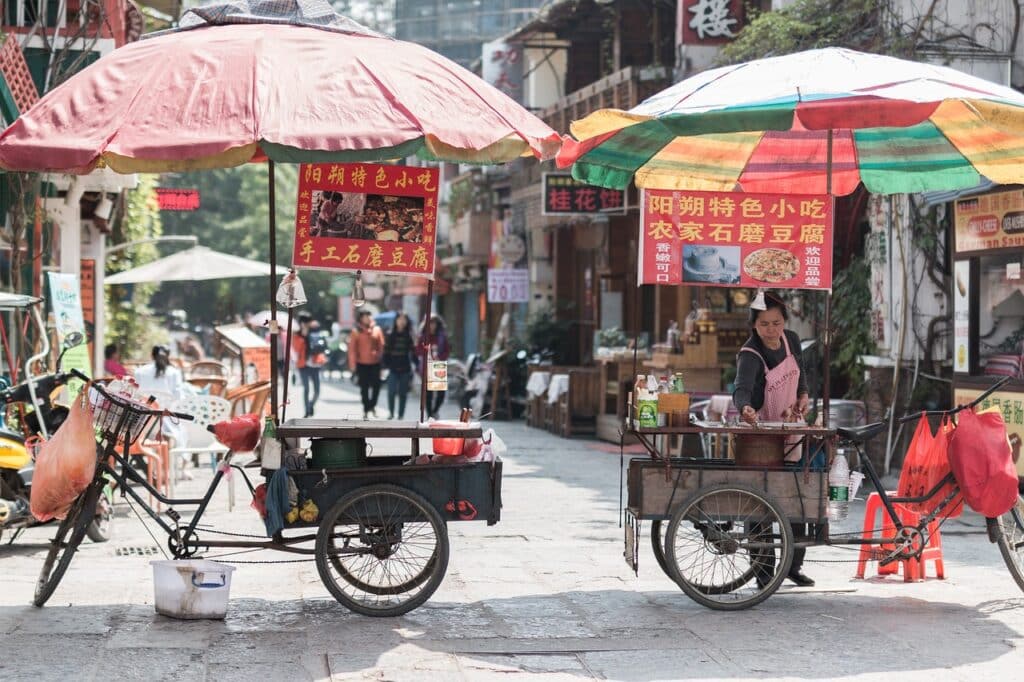China’s Relentless E-Commerce Price War Leaves Sellers Struggling to Make Ends Meet
China’s e-commerce vendors are struggling for survival as sales growth slows, price pressure rises, and shopping platforms compete with increasingly aggressive policies to attract increasingly cost-conscious customers. A once-thriving e-commerce industry, punctuated by shopping bonanzas featuring galas and celebrities, is bearing the brunt of a sputtering economy that has seen consumers tightening their purse strings.
While extreme discounting, influencer-led sales campaigns, and generous return policies enriched the sector, these same practices are now hurting the very sellers the sector relies on. “The good times for e-commerce are over,” said Shanghai-based e-commerce operator Lu Zhenwang, who sells everyday items for small vendors. “This year there is fierce competition and I don’t think a lot of sellers will survive another three years.”
Profit margins are being squeezed at big platforms like Alibaba (9988.HK) and JD.com (9618.HK), as well as thousands of small businesses that joined the e-commerce boom starting around 2013. This boom has led e-commerce to account for 27% of retail, with 12 trillion yuan ($1.65 trillion) of goods sold annually. However, as the economy slows, so does e-commerce, with the double-digit growth of recent years being replaced by single digits, according to data from Euromonitor.
One outcome is that enthusiasm for participating in sales festivals is noticeably cooling, Lu said, with China’s biggest – Singles Day, centered on Nov. 11 – being a “risky” proposition. “You have no idea how many products you will be able to sell, but you have to build stock for it,” he said. “It’s almost impossible to see explosive growth during a shopping event.”
THE THREAT OF POLICIES
During the online shopping event “618” – stemming from JD.com’s June 18 founding – the owner of women’s wear brand Inman called on authorities to rein in platforms’ “purchase return protection” policies which force sellers to bear the cost of returns. Such policies started on PDD’s (PDD.O) low-price platform Pinduoduo in 2021 and proved so popular that others followed suit – at huge cost to sellers, vendors told Reuters. “The return rate on e-commerce platforms is 60%,” Inman founder Fang Jianhua wrote on social media. Before such policies, it was about 30%, he said.
Fang said large platforms that sellers rely on should not use “consumer-first” policies that increase the burden on businesses. Many of them have to sell below cost to maintain high positions in search results during multiple discount promotions.
E-commerce operator Lu said return policies have driven up return rates in categories such as clothing.
Although the return rate for clothing has always been relatively high, it has skyrocketed since the removal of the requirement that buyers cover return shipping costs, sellers said.
“For every three pieces of clothing sold, at least two are returned, and you pay for the return shipping,” Lu said.
Pinduoduo, JD.com and Alibaba’s Taobao and Tmall did not respond to requests for comment.
SELLING AT A LOSS
Davy Huang, executive director at e-commerce consultancy Azoya, said consumers are increasingly returning their impulse purchases, making life difficult for small retailers who don’t have sufficient liquidity to absorb the costs.
“But I think the response rates are just a fraction of the challenges these companies face,” he said. “You also have high costs to acquire traffic and high costs to work with influencers and live streamers.”
Retailers are also feeling the impact of factories selling directly to consumers at factory prices. As a result, some sellers on Pinduoduo have been making losses for two years, said He-Ling Shi, an economics professor at Monash University in Melbourne.
“They have little hope that prices will ultimately be enough to cover their costs, but they have to do it (continue selling through Pinduoduo), otherwise they will essentially have to close their factories,” Shi said.
Lu said the operating environment is poor because the peak of e-commerce has created the so-called “Neijuan” effect (reworking for lower returns).
“There is no sales growth because there are no new customers and people’s average income is not increasing like 10 years ago,” Lu said. “There is only competition, between platforms, between sellers. This is the new normal for the e-commerce industry in China.”
